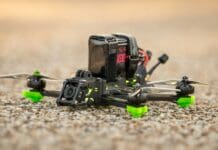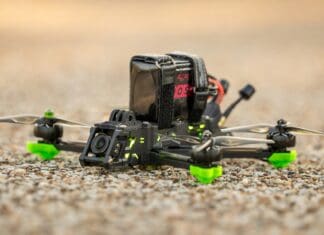This post is also available in:
 עברית (Hebrew)
עברית (Hebrew)
The US Navy declared its MQ-8C Fire Scout unmanned helicopter mission capable and ready to deploy aboard Littoral Combat Ships. The initial operational capability (IOC) declaration means that the Navy can now begin fleet operations and training. Current plans call for purchasing 38 Northrop Grumman MQ-8C Fire Scouts, which are based on a commercial Bell 407 airframe.
The MQ-8C, which is larger than the MQ-8B currently used by the Navy, will start deploying during Fiscal Year 2021.
The move comes after the Navy rethought how it was going to use the aircraft. More than a year ago, the Navy was still testing how Fire Scouts could be used to repel swarm attacks of small attack craft. By this spring, the Navy scrapped those plans in favor of loading the aircraft with sensors to provide an LCS with superior over-the-horizon targeting capabilities.
The MQ-8C can fly up to 12 hours and will be equipped with an upgraded radar allowing for a larger field of view before deploying. The improved radar also offers a range of digital modes including weather detection, air-to-air targeting and a ground moving target indicator (GMTI), according to the Navy.
The rethinking of the future role of the aerial vehicle led to the preference of focusing on adding more lethality and longer range to the ships for a Pacific-focused capability and focusing less on using the ships to patrol U.S. 5th Fleet waters where the risk of swarm boat attacks was greater.
The evolving LCS mission caused Navy officials to determine a better use of the Fire Scout is to load it with surveillance and targeting equipment to further enhance the LCS’ improved lethality, as reported by usni.org.


























